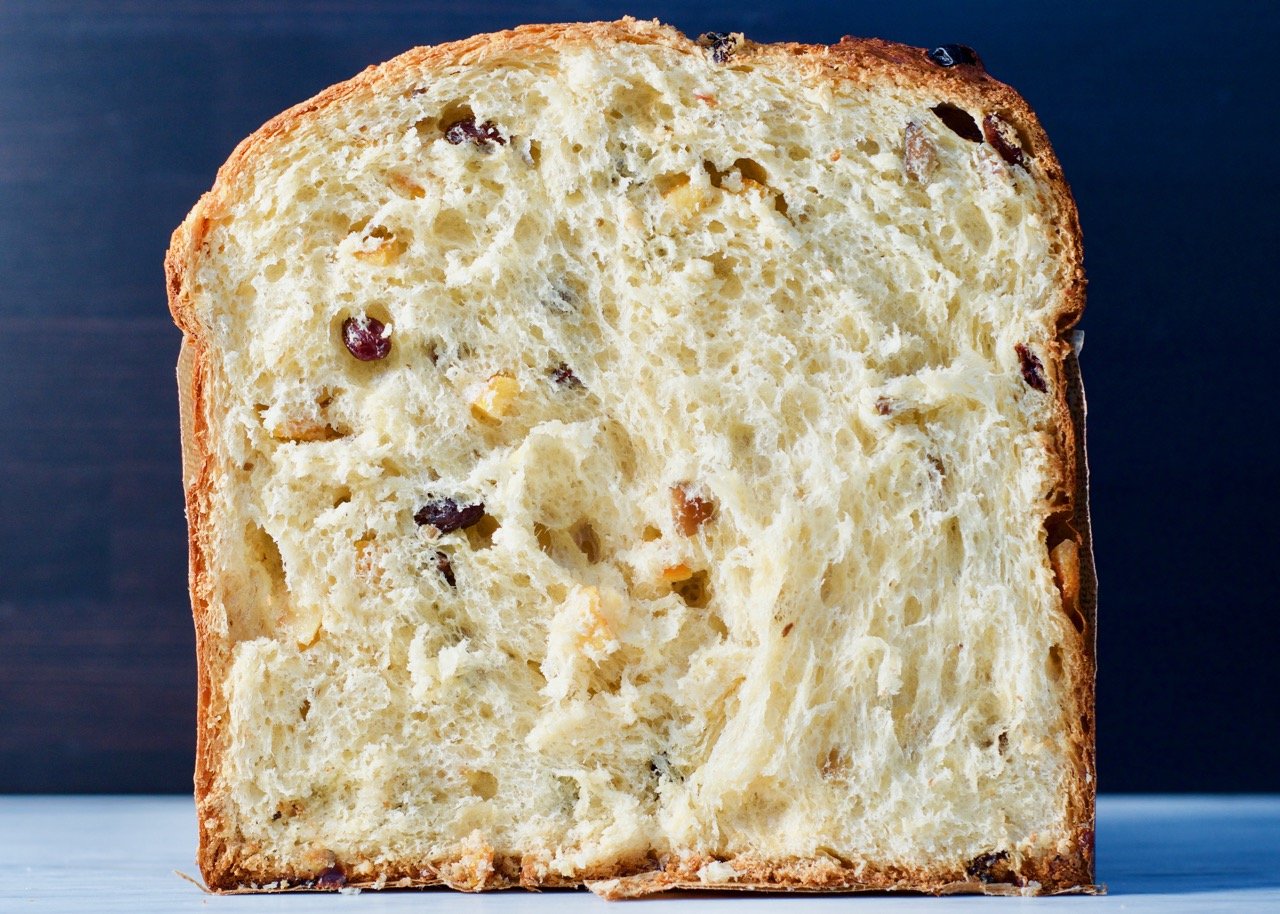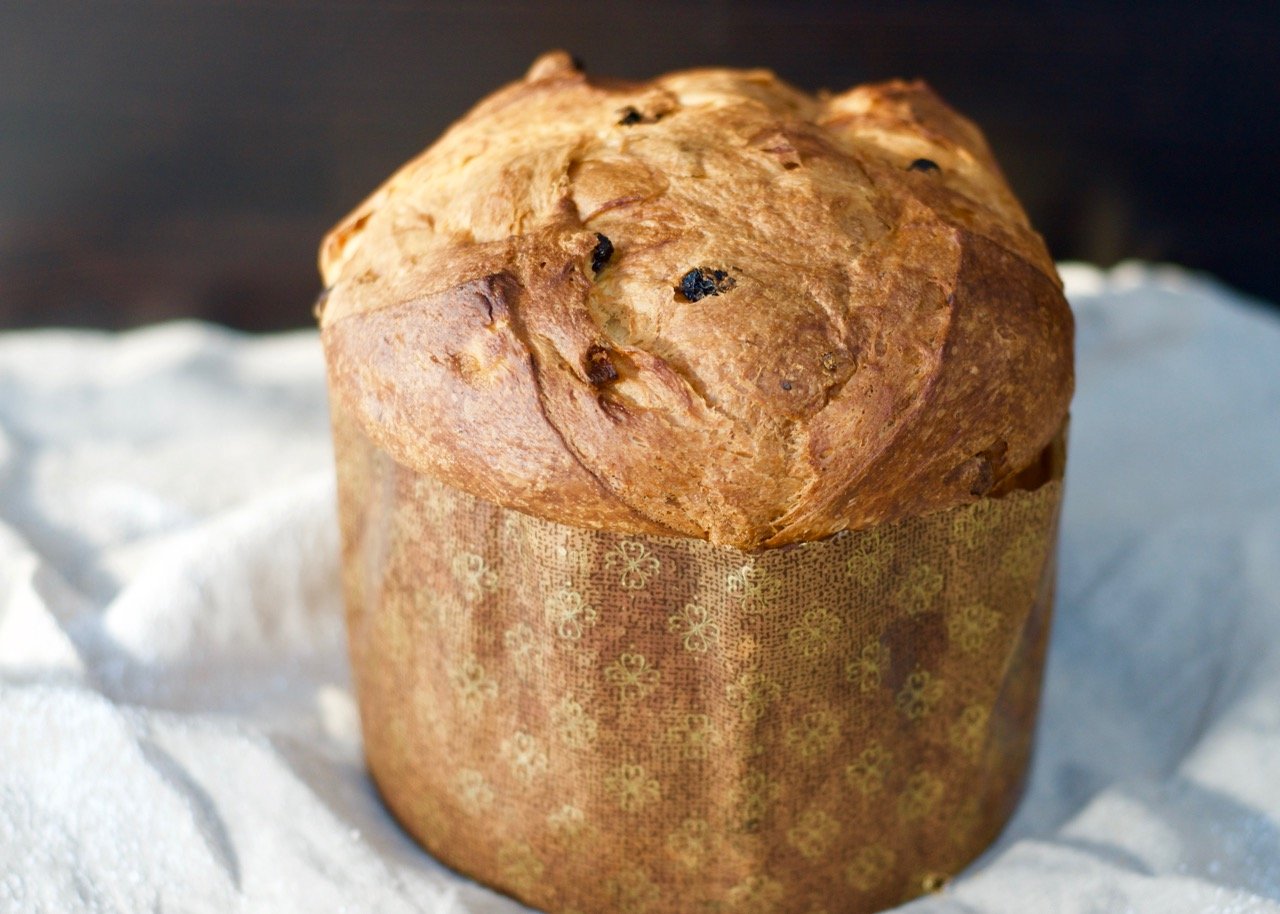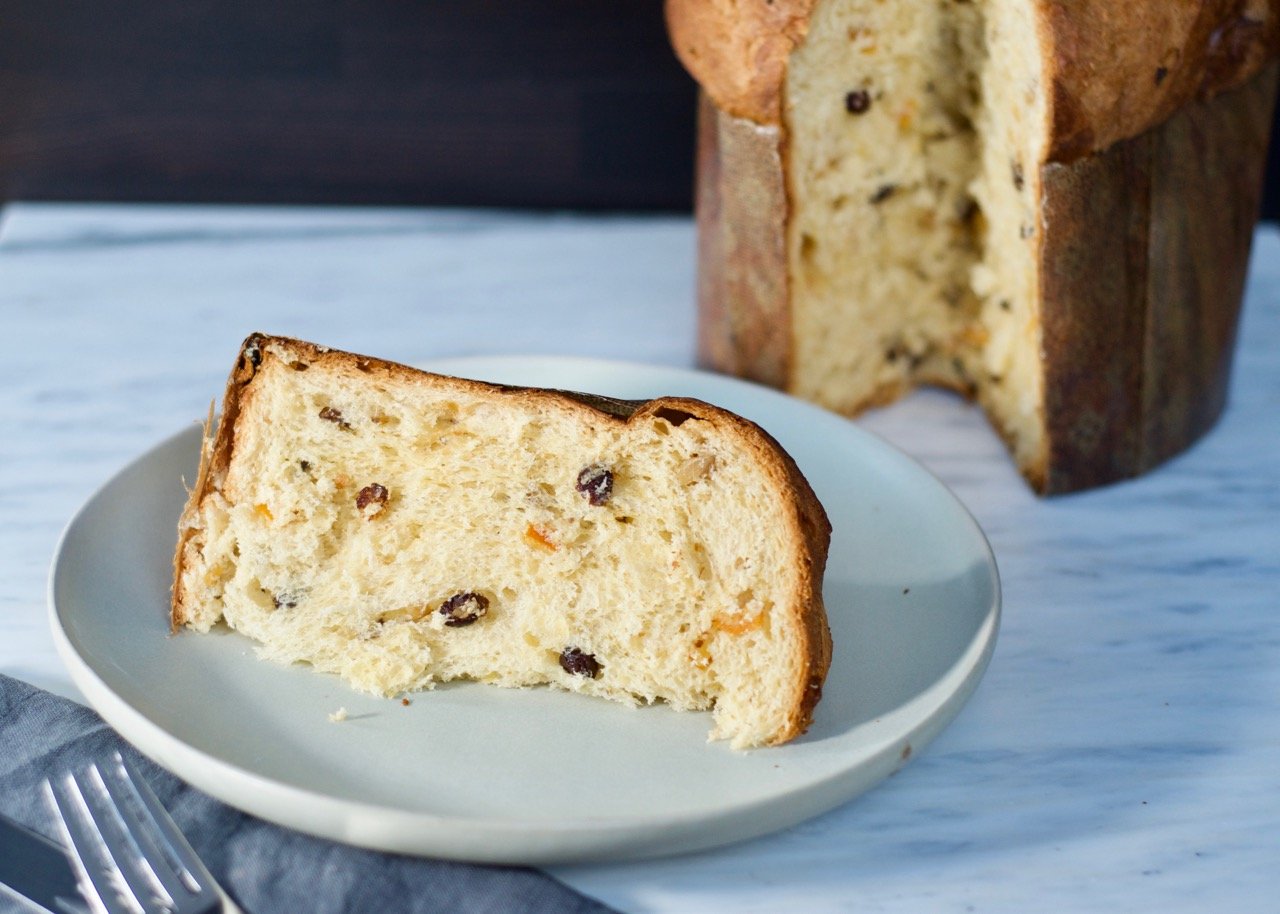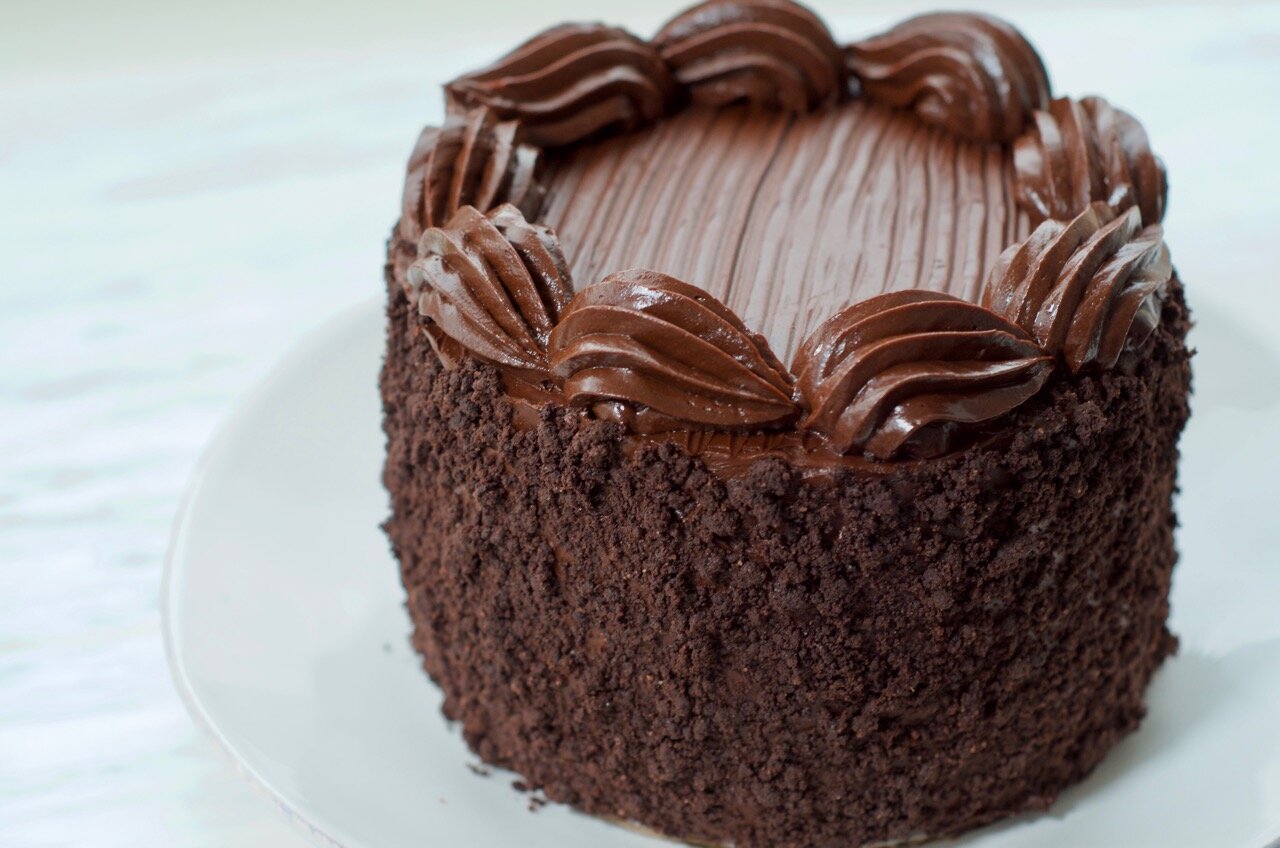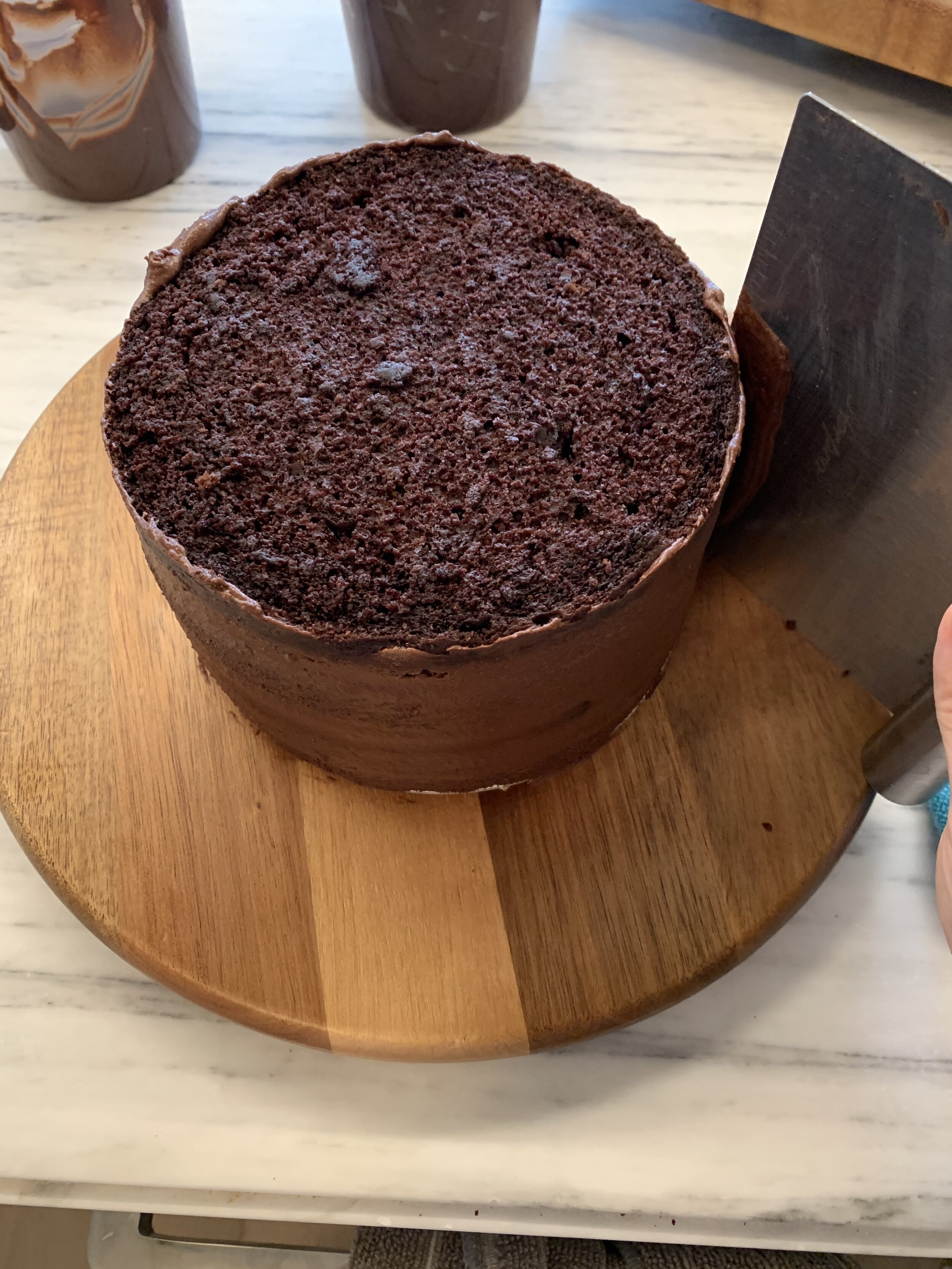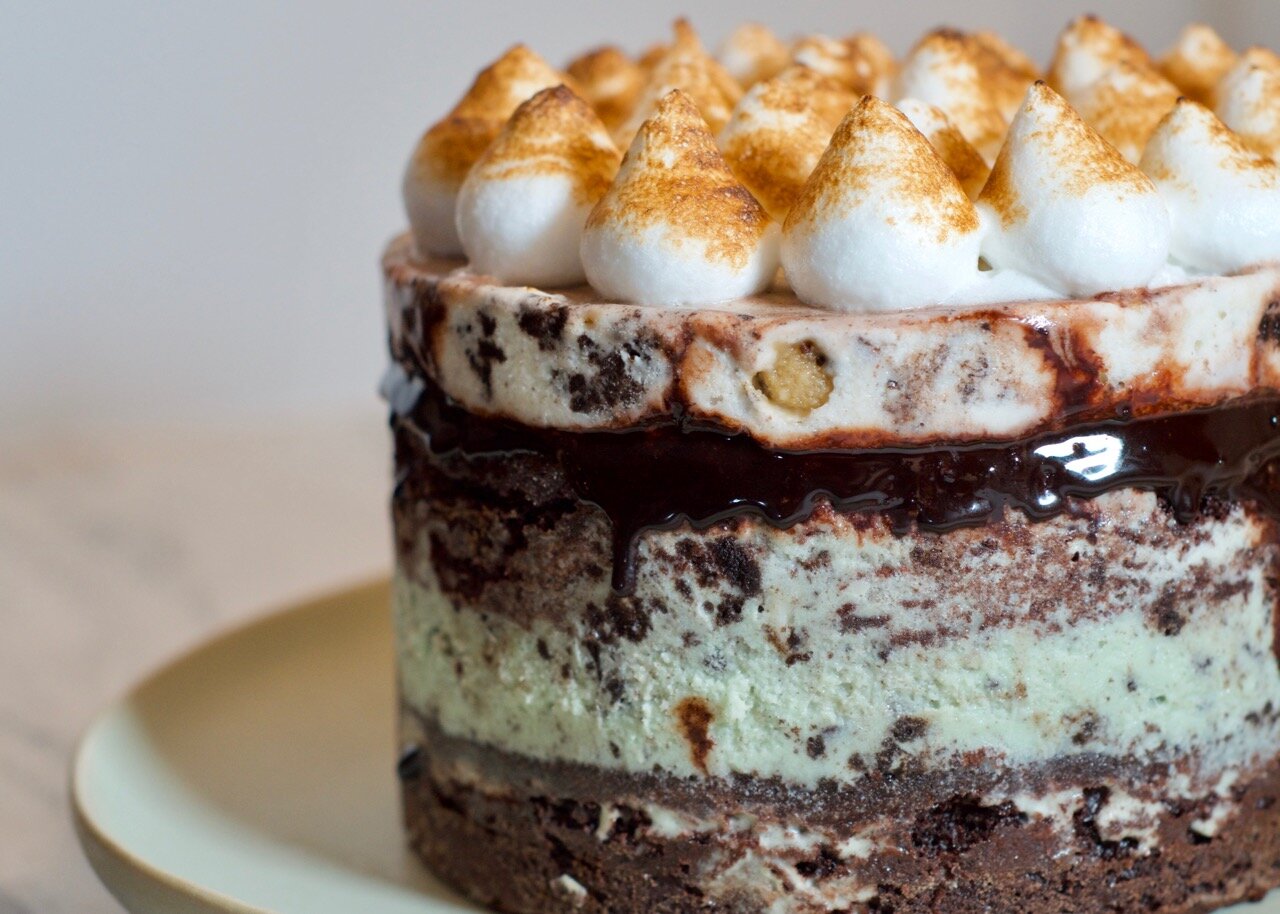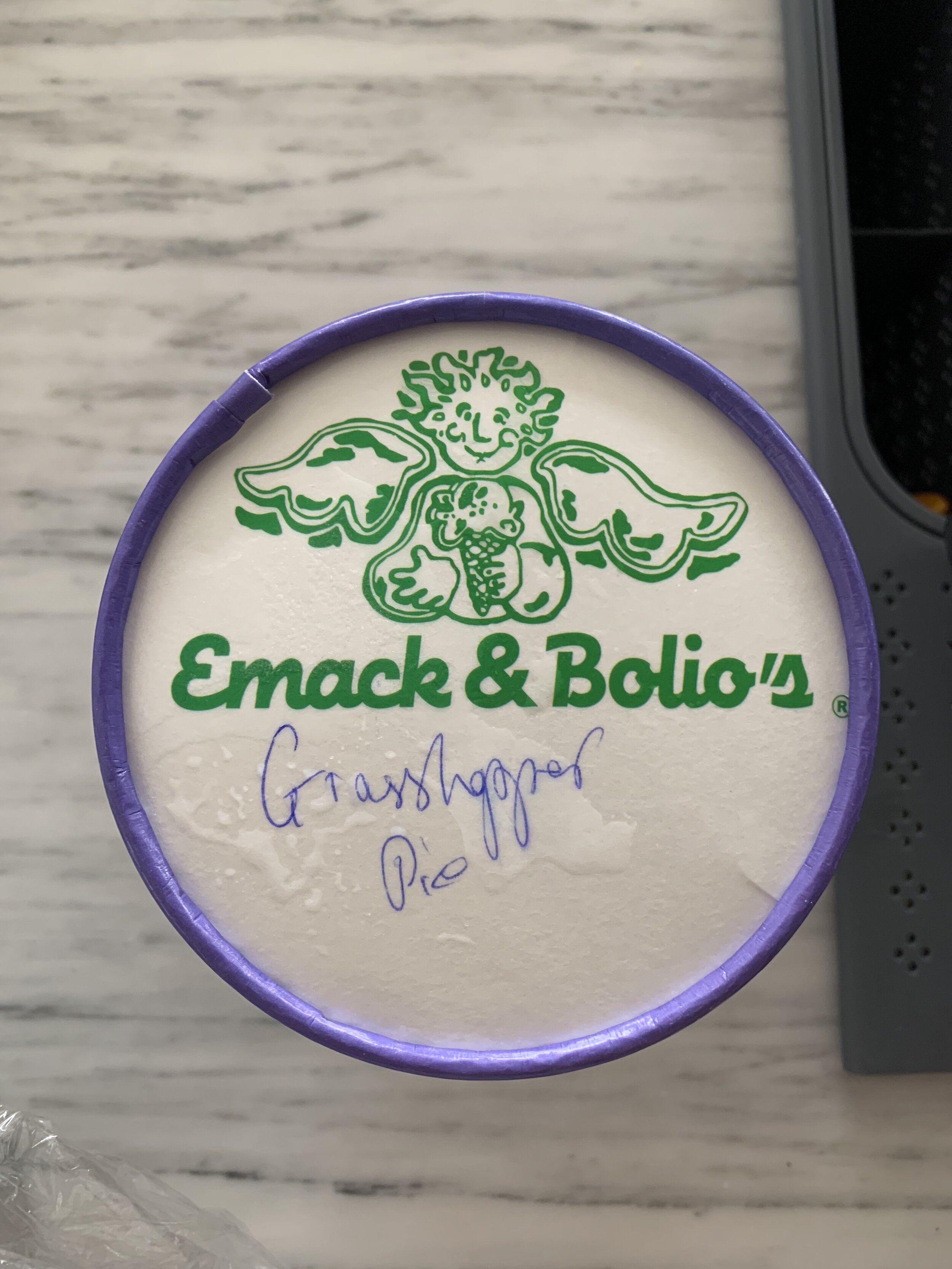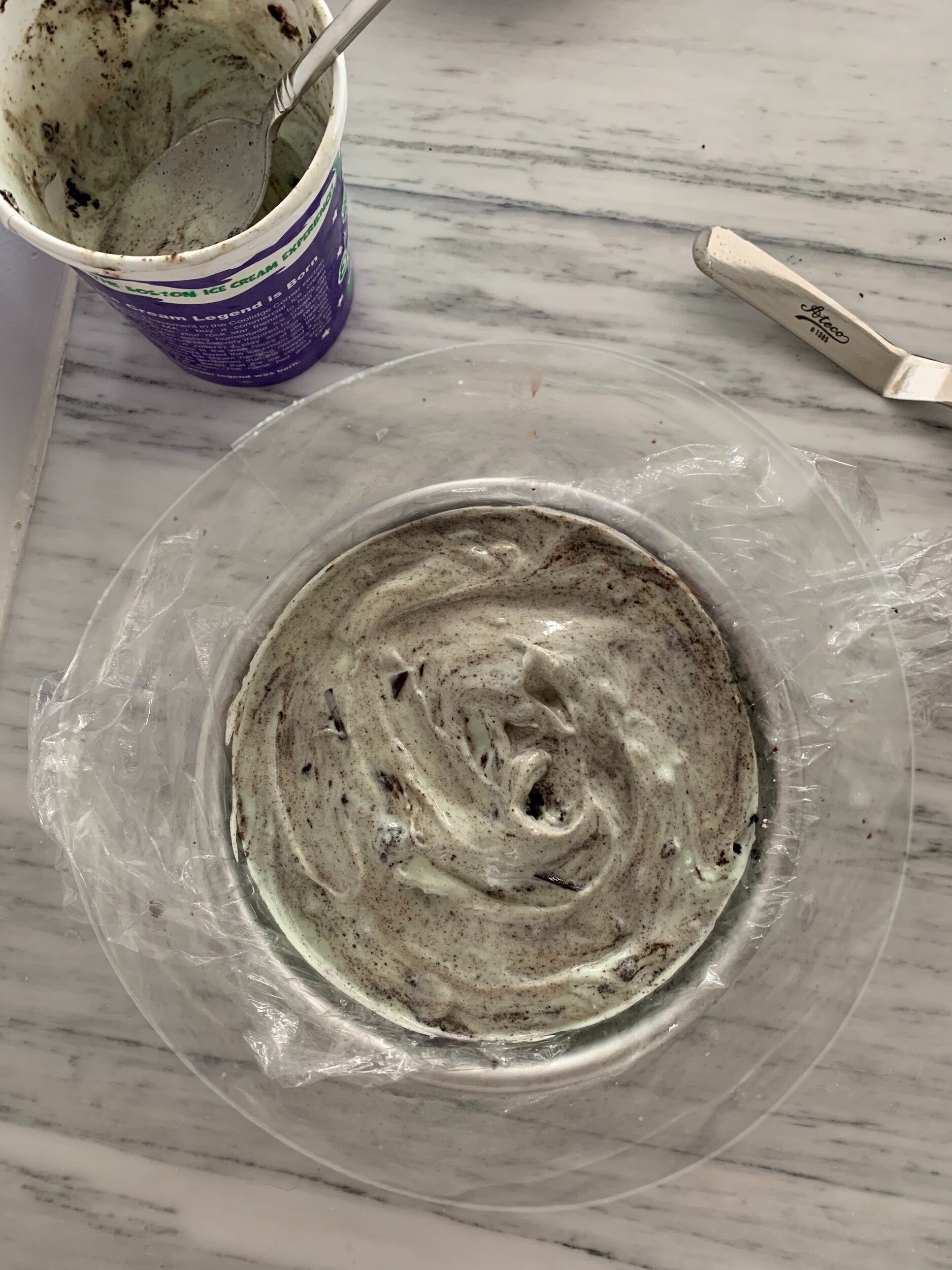a guide to panettone
/What is panettone?
Panettone is a traditional Italian delicacy typically eaten during the holidays, somewhere between cake and bread. It’s frequently sold wrapped in colorful paper or in aluminum tin cans and stays fresh for a remarkably long time. The texture is impossibly soft and buttery and filled with everything from candied orange peels to chocolate, chestnuts or any variety of nuts. The process spans multiple days, but most of that just involves some advanced planning with plenty of rest time for the dough so don’t be intimidated by the prep time. This recipe is meant to provide a basic framework while you can customize the fillings as you prefer.
Making panettone is certainly a project and has been on my bucket list for ages. Store bought panettone is delicious and while it certainly keeps well, it’s a real treat to dig into a freshly baked loaf. Take a big whiff after you first slice into a freshly baked panettone - it smells like what the perfect holiday candle should smell like, with notes of vanilla, citrus, and butter.
Why use a sourdough starter?
The traditional Italian approach uses a natural sourdough starter and this recipe assumes you have a starter ready to go. I won’t go through the steps for creating one here, but the following links are some great resources: (The Perfect Loaf and Full Proof Baking). I’d recommend anyone to already be familiar with the sourdough process before embarking on the panettone journey. The recipe uses a lot of high quality ingredients which aren’t cheap, so it’s not a great place to try out sourdough for the first time.
There are some recipes that use instant yeast which is quicker process, but the starter yields a far more flavorful end product which can actually help the panettone keep longer after the fact.
Timeline & key elements of the process
The below timeline shows the overall framework for the panettone process and hopefully can allow you to better follow the recipe. Panettone calls for a stiff levain to give a well rounded flavor with minimal acidity. Some recipes require a very intensive levain feeding schedule of every 4 hours, but that isn’t a practical option for most people (and I’m certainly not inclined to wake up in the middle of the night to feed my levain) and not necessary.
There are a few necessary tools in this process:
Stand mixer: In some recipes, a stand mixer is a nice to have. In this one, it’s a must have.
Panettone molds: I purchased from amazon. Feel free to order from elsewhere, but the recipe fits into a mold 6.75” diameter.
Skewers: Either wooden or metal will do, just make sure the length is 2 inches longer than diameter.
Thermometer: Helps determine when the panettone is done baking
Days 1 to 3: Prepare a strong levain that can properly leaven and support the dough
Starting with a mature sourdough starter, it takes ~3 days to refresh the starter so that it becomes an active levain. If you already have an active starter that can rise 4-5x in volume, you can go ahead and skip this step.
Feed the starter 3x a day (9am, 2pm, 9pm) at a ratio of 1:2:1 (starter/flour/water) at 50% hydration during the day (which only has ~7 hours in between feeds). Overnight, feed at a ratio 1:4:2 to extend the rise time overnight and prevent the starter from peaking too early and falling before the morning feed time. You can keep the volumes low during feeding to reduce wasted starter, until the final feed which requires a total of 70g.
Example: Daytime feeds can use 10 g starter, 10 g water, 20 g flour. Nighttime feeds use 10 g starter, 20 g water, 40 g flour.
If after three days your starter is not strong enough to rise 4-5x in volume, I would recommend to extend this period and continue feeding until your starter is strong enough to do so.
During this time, prepare any fillings you intend to use like candied orange peels (recipe included below).
Day 4: Make first dough & bulk fermentation overnight
2pm: Prepare final feed for starter, targeting a final weight of 70g of levain.
8pm: Prepare the first dough. The bulk fermentation lasts ~12 hours overnight in a warm spot.
Day 5: Prepare second dough and add fillings. Shape, proof, and bake.
8am: Prepare the second dough, incorporating the fillings. Dividing the dough into two stages helps develop the gluten.
9am: Shape the dough into a taut ball and allow to proof in mold for up to 8-10 hours, or until dough has risen over the edge of the mold (approx. tripled in size). Insert the skewers parallel across the bottom of the mold prior to adding the dough.
5pm (depending on proofing time): Score the surface and bake panettone for 45 min or until internal temp reaches 200F. Allow to cool upside down to prevent panettone from collapsing.
Comparing recipes
I scoured the internet for all the best panettone recipes out there, and noticed some notably wide discrepancies across ratios of ingredients. My recipe is a middle ground between some reputable sources, and I’ve included the bakers’ ratios below to help you compare.
panettone
serves 10
ingredients
candied orange peel
2 navel oranges
1/2 cup sugar
1 cup water
first dough
250 g bread flour
125 g water
70 g levain
5 g barley malt syrup (optional)
50 g egg yolks (3 eggs)
65 g sugar
55 g unsalted butter, room temp
final dough
60 g bread flour
50 g egg yolks (3 eggs)
60 g sugar
4 g salt
20 g honey
70 g + 15 g unsalted butter, room temp
70 g candied orange peel
70 g raisins, soaked in rum or water
40 g chestnuts, chopped
zest of one lemon
5 g vanilla paste
steps
candied orange peel:
1. Prepare the oranges: Peel the oranges just above the pith and into 1/4 inch strips
2. Blanche the peels: In a pot of boiling water, briefly blanche the orange peels for 10 seconds then remove and rinse under cool water. If you have little pith, only once is necessary but if you have more pith, repeat 2-3 more times to reduce the bitterness.
3. Cook the orange peels: In a saucepan over medium heat, add the orange peel, sugar, and water. Bring to a simmer and cook uncovered for 10-20 minutes, until the peels turn translucent and liquid becomes syrupy.
4. Cool and dry: Transfer the strips to a rack and let them dry
5. Cut into small chunks: To use in the panettone, cut the strips into 1/2 inch chunks and set aside in an airtight container until ready to use.
first dough:
1. Make base dough: In the bowl of a stand mixer with the dough hook attachment, add the flour, water, levain and malt (if using). Mix until a cohesive dough is formed, about 10 minutes.
2. Add in egg mixture: Mix together the egg yolks and sugar. Slowly pour the mixture into the dough a little at a time as the stand mixer continues on low speed, allowing the dough to fully incorporate the egg between adds.
3. Mix in butter: Once the egg yolks and sugar have been fully incorporated, add the butter a little at a time until mixed in. This should take another 10 minutes, and the dough should be smooth and pass the window pane test.
4. Bulk fermentation: Set the dough in a large bowl, cover and rest in a warm place for 12 hours. The dough should triple so find a bowl with ample space.
final dough:
1. Mix flour in with first dough: In the bowl of a stand mixer with the dough hook attachment, add the first dough and flour and mix for 10 minutes.
2. Add in egg mixture: Mix together the egg yolks, sugar, salt, and honey. Slowly pour the mixture into the dough a little at a time as the stand mixer continues on low speed, allowing the dough to fully incorporate the egg between adds.
3. Mix in butter: Once the egg mixture has been fully incorporated, add the 70 g of butter a little at a time until mixed in. This should take another 10 minutes and you should be left with a strong and smooth dough.
4. Add in fillings: Add in the candied orange peel, raisins, chestnuts, vanilla and lemon zest. Mix on low until just combined.
5. Prepare the molds: Take two skewers at least 2 inches longer than the diameter of the mold and poke them parallel across the mold near the bottom. The skewers will allow us to invert the panettone while cooling.
6. Shape and rest: Move the dough over to a flat surface. With the help of a bench scraper, make a taut round ball by rotating the dough against the surface of the bench (similar technique shown in this video). Place dough in the prepared mold with the skewers and cover and rest in a warm area for ~8-10 hours, or until the dough has risen over the edge of the mold and tripled in size.
7. Bake the panettone: Preheat oven to 350 F. Score a shallow cross over the surface of the dough use a lame or sharp nice and place the remaining butter in the middle of the cross. Bake for 40 - 50 minutes, or until the surface is golden brown and the internal temperature registers 200 F.
8. Invert and cool: To prevent the panettone from collapsing while cooling, it is essential to cool it upside down using the skewers. You can use a pile of books to hold up the skewers on either end of the panettone like I did, or use two stock pots if tall enough. Allow to fully cool for 2-3 hours and dig in!

